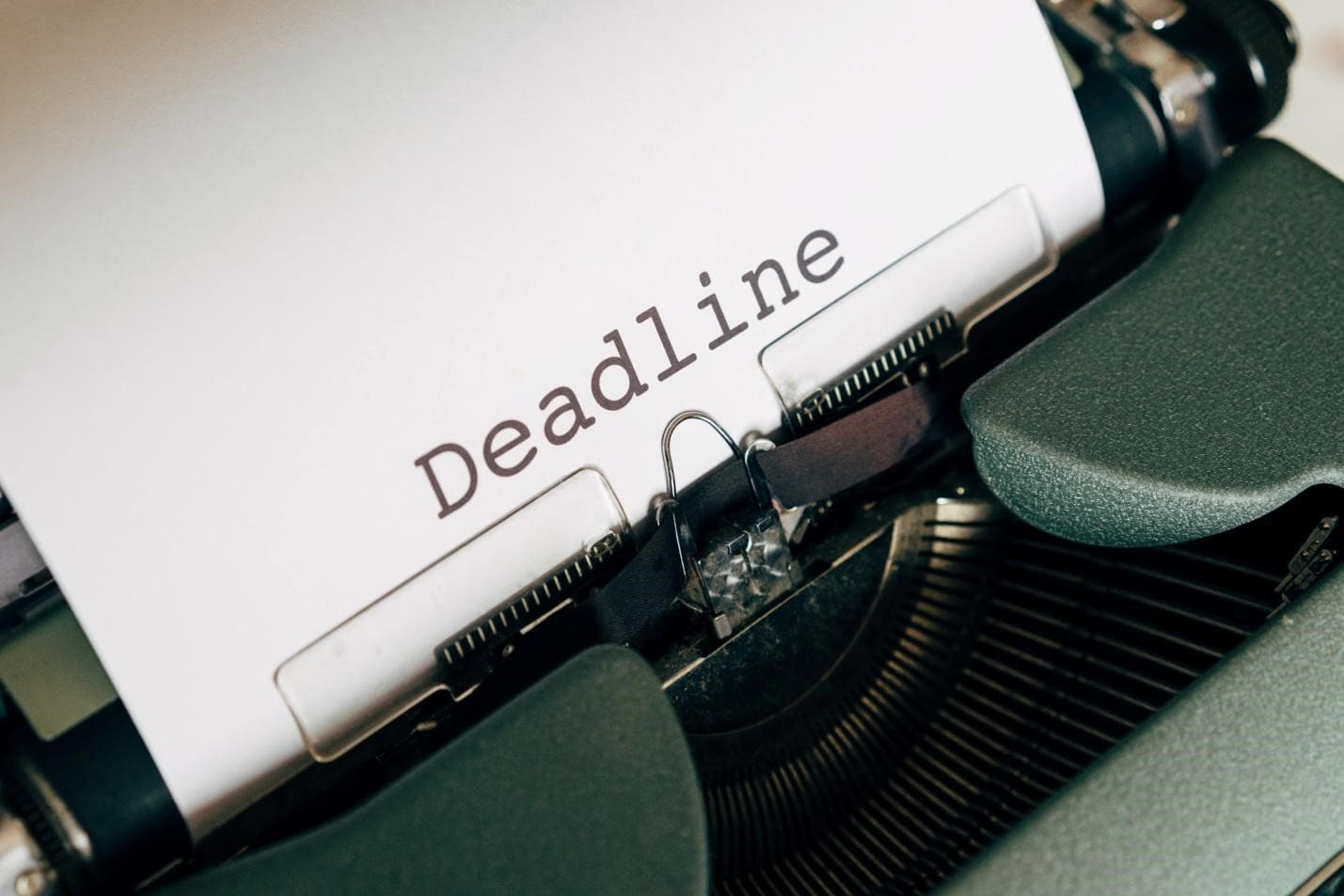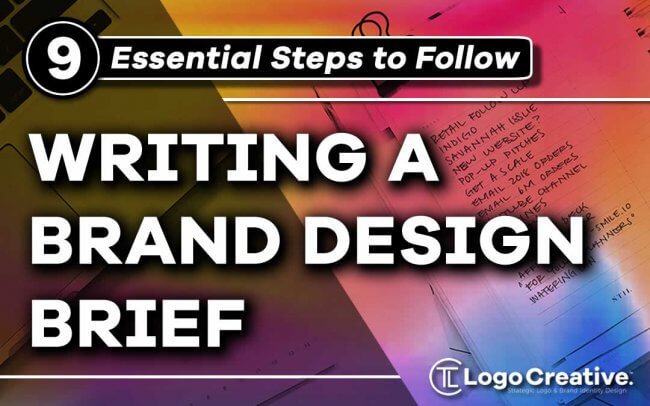Do you want to write a compelling brand design brief? Follow these nine steps: In this article we discuss Writing a Brand Design Brief: 9 Essential Steps.
A well-written brand design brief is key to effective communication with designers and guarantees for successful outcomes. That’s how it works: the more precisely you describe your company and your brand vision, the better the brand design the team of experts create.
Table of Contents
Step #1 – Present Your Company

The first step is the simplest one. Here you need to present to your company. You should briefly explain what your company does, what goals it has, and what place it holds in the market.
You should also provide some basic information regarding the size of the industry you work in and define the main current market trends if they can somehow influence your brand design choice.
Besides, you can write about the founders and specify the date they started the company. Optionally, you may explain what inspired founders to create a new product and mention how they see the company’s future.
Step #2 – Share Your Mission and Vision Statement
Mission and vision statements are an integral part of your overall branding strategy, so make sure to include them in your brand design brief. If you have just started your company and haven’t articulated your statements yet, you should do it now.
What is the mission statement? It’s the core purpose of your company. Second, it’s the highest goal that you strive to achieve and are currently working on.
What is a vision statement? It’s an inspirational statement that describes the idealistic future of your company. It’s more like a dream you aspire to achieve. It’s something that makes the work of your company meaningful and purposeful.
Here are a few examples of mission and vision statements from world-famous brands:
- Tesla:
- Mission: To accelerate the world’s transition to sustainable energy.
- Vision: To create the most compelling car company of the 21st century by driving the world’s transition to electric vehicles.
- KLM Airlines:
- Mission: To provide customers with a high-quality service adaptable to their changing needs.
- Vision: To become the world’s biggest and leading airline company.
Step #3 – Talk About Your Product
Now you need to describe your product. You should explain what it looks like and how it works. You should specify its key features and competitive advantages, and define your value proposition.
This information will help designers understand what elements of visual identity they need to create to demonstrate the authenticity of your brand.
If your company sells a physical product, you should also mention your product’s materials and describe the packaging. If your company offers digital products, you should provide a link to your website or app.
This information will allow designers to understand where and how you will use the designed elements of visual identity.
Step #4 – Describe Your Target Audience
The main task of graphic designers is to create a visual identity that resonates with your target audience. And it means that the better you describe your target market, the more effective and relatable your brand design will be.
In your brief, you need to specify the demographics and psychographics of your prospective customers. You should provide more information than just the age and gender of your target audience. To help designers “see the full picture”, you should describe the following:
- Lifestyles of your customers
- Their attitudes, beliefs, and principles
- Their favourite brands
- Their favourite websites, apps, and social media platforms
- Provide any other information that might be relevant in the context of your brand
Step #5 – Define Your Key Competitors

Whatever niche you work in, you are not the only player in the market. There are other companies out there that offer products and services similar to yours.
If you want to create a successful brand, you should be aware of the competition. You need to know who your rivals are and what branding strategies they use.
Basically, you need to conduct a brand audit in your niche. It will help your team understand what more you can offer and promise to the target audience that your competitors haven’t done yet. Here is a list of things to consider when analysing competitors:
- What are competitor’s brand colours?
- What do their brand logos look like? For instance, can they be described as minimalist, sophisticated, black-and-white, etc.?
- What does the packaging of their product look like?
- What do their social media accounts look like?
- What kind of brand messages do your competitors promote? For instance, do they promote a healthy lifestyle, cultural diversity, green living, etc.?
Answers to these questions will help designers understand what specific design elements they should use to make your products stand out from the pack. If you don’t provide such information, designers will not be able to create an effective visual identity design for your brand.
Step #6 – Outline Your Preferences
You have already provided enough information about your brand and your business. Now is the time to discuss your preferences.
What kind of visual identity do you strive to build for your brand? What design elements do you find the most important? Share your ideas and try to be as specific as possible.
Also, consider using pictures in your brief to visualise your ideas. Visit websites of the best graphic design companies and try to find relevant samples. Or, check Pinterest and Dribble – these platforms work perfectly for visual search.
If you have no idea what type of design is right for your brand, mention a few brands (from whatever niche) whose designs you find visually appealing.
Also, you can specify some colours or design elements that you dislike and don’t want to be used. Let’s say you sell eco-friendly cosmetic products. Typically, companies in your niche use green shades for their logos.
If you don’t want your brand colour to be green, write about it in your brief – it’s crucially important to inform designers about such details upfront.
Step #7 – State Your Goal and Set an Objective
What specific goal do you want to achieve with a new brand design? Do you want to improve brand awareness, increase sales, or maybe improve customer loyalty? Different goals demand different designs, so make sure to clarify this point in your brief.
If your brand exists for a while, make sure to explain why (in your opinion) the current design doesn’t fit your company. Explain what designers should change, what new elements they should add, and what “old” elements they should leave intact.
Finally, you need to write an objective. You need to formulate the task that needs to be completed. Here are a few examples of goals and objectives:
- Type of the company: soft drink company
- Goal: Increase brand awareness.
- Objective: To create a vibrant, attention-grabbing brand design that will entice the curiosity of our customers and make our products stand out on store shelves.
- Type of company: Consulting company
- Goal: Build trust and boost sales
- Objective: To design a round-shape logo that our customers will associate with the trust, loyalty, and power of community. Navy blue shades must be used.
- Type of company: SaaS company
- Goal: Improve customer loyalty
- Objective: To create a minimal style design that will be associated with innovations and diversity.
Step #8 – Set a Deadline and Budget

When it comes to creative projects like branding projects, it’s always important to set deadline and budget. Otherwise, designers and brand managers may lose count of time and money.
You don’t want that to happen, do you?
When do you expect to start using the new brand design? How much money are you ready to spend on a branding project? Provide answers to these questions in your brief, and you will avoid possible misunderstandings with the brand design team.
Step #9 – Polish Your Brief
Once you finish writing your brand design brief, you should proofread and edit it. You need to ensure that the document has a clear and logical structure and is easy to read through.
Don’t forget to check plagiarism for free as it is important to have unique ideas and information.
Here is what you need to do:
- Add titles to each section.
- Highlight the most important details.
- Create bulleted lists.
Also, make sure that the document includes only relevant and useful information. Read your brief one more time and delete sentences and phrases that don’t add any value.
Keep your document brief, clear and concise to facilitate the work of designers.
Wrapping up
The importance of the brand design brief is hard to overestimate. The use of this document boosts communication with the brand design team, enhances the development process, and helps to ensure that the project will be delivered on time and within budget.
Are you ready to start writing a brand design brief right now? We highly encourage you to use this article as a guide to ensure that your document includes all essential information.
Take these nine steps, and you will not get disappointed with the results.
Join The Logo Community
We hope you have enjoyed this article about Writing a Brand Design Brief: 9 Essential Steps. If you would like more personal tips, advice, insights, and access to our community threads and other goodies, join me in our community.
You can comment directly on the posts and have a discussion with Andrew, the Founder of The Logo Creative.
*TIP – We recommend Freelance Level Up Kit by Kady Sandel, It’s for graphic designers who have the foundations of their business but want to grow, raise their prices, and sign more (and better!) clients.
Author Bio
Jessica Fender is a marketer, editor, and blogger. Currently, she works for GetGoodGrade, a writing company. She helps college students – those who fail in class and google “write my paper for me” – to ace their academic assignments. When Jessica has free time, she creates educational content for sales and marketing blogs.


